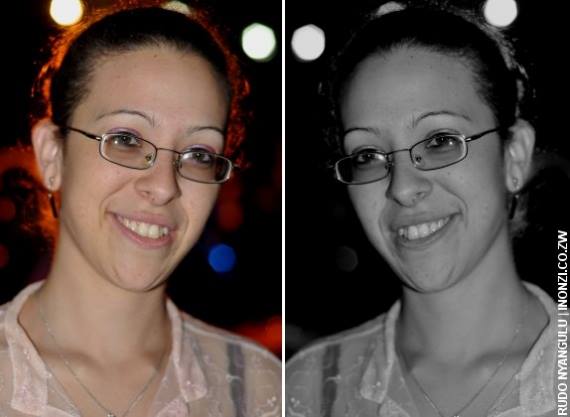
Date published: March 2017
http://newzimbabwevision.com/being-coloured-in-zimbabwe-seeking-recognition-a-place-to-belong-to-be-accepted-included-and-called-upon-for-their-skills-and-talents/
“MUKIWA! MURUNGU! Muvheti”, they call out to me as though I am white. Most people do think I am white because of the colour of my skin, the texture of my hair and the green-brown eyes the good Lord blessed me with. But that’s an inaccurate assumption because I am, in fact, a fourth generation coloured female and proud of it.
The history of my mixed race began when two different English men, both settlers who travelled miles across oceans, leaving behind their families, came and staked their claim to mineral rights –among other things – on this African soil, now known as Zimbabwe.
Searching for companionship, both these men managed to convince two illiterate African (black) women that mirrors could reflect their beauty, for a ‘kind’ fee; these men could bed them whenever they felt like it. These women were my great-great grandmothers.
Both of my great-great grandmothers never had the privilege of marrying my great-great-grandfathers as they were either already married or were to wed on their return to the Queen’s land. Besides, the colonial era was not conducive to interracial relationships.
Many children were born to women like my great-great grandmothers, adding to the increasing population of mixed race people commonly referred to as coloureds. My great-grandmothers then both married coloured men, who came from similar backgrounds, and had their own children who in turn had their own children; a couple to whom I was blessed to bring joy!
Both maternal and paternal families are of varying shades of colour – some are dark, some are fair, some are olive-skinned (sort of Mediterranean toned) and some are just in between; call it a caramel-like complexion. With all these shades, we form the ‘rainbow people of coloureds’.
Amanda’s great-great grandfathers would have arrived in Africa on a ship, just like these men docking into Cape Town.
Not black enough; not white enough.
In my immediate family, my father is a ‘dark caramel’ and my mother is a ‘light caramel’. Fortunately or unfortunately, my sister and I both followed my mother’s fair genes. I say fortunately or unfortunately as there have always been comments flying from my darker family members, comments of how ‘white’ we are!
When I was much younger, I remember a time when I even asked my father if he was black. That was a child’s mentality at work but it had been awakened when I went to school and the children would make a fuss over me being the only murungu in class.
They made more of a fuss when I proved that I could speak their mother-tongue, Shona, as fluently as most of them. Sadly, the fussing sometimes turned negative and became bullying as I was the minority in the class. But I overcame it.
According to some stereotypes, a coloured can only be a dark-skinned person of a very violent nature and with a mouth that spews expletives. Well, I certainly showed and shamed many a person who misjudged me, refusing to know me as the person I was born to be, a coloured!
I heard a joke passed once about why coloured people tend to have ‘short wires’; apparently, it’s because the white blood and black blood of our forefathers are fighting for free flow. Only after I had laughed did I realise the truth behind that statement.
Since creation, coloured people have always been ostracised by both blacks and whites because we are neither black enough nor white enough to fit in any group.
All we’ve ever been looking for is recognition, a place to belong, to be accepted, to be included, to be called upon for the skills and talents that so many of us possess, for the history behind our being and our culture to be heard and listened to.
Don’t paint Coloureds with one brush.
We coloureds vary in our personalities; some are easy to get along with, others are violent and need their mouths rinsed out with a strong combination of dishwasher and Jik, and there are many others who are docile, principled, well-mannered, highly educated, fun-loving folk in our lovely Zimbabwe.
Coloured Zimbabweans are some of the happiest and hippest people around. We know how to get down and have loads of fun (you haven’t been to a party until you’ve been to a coloured party) and we make the best chicken curry for Sunday lunch (yes, Indians can make a mean curry but our type doesn’t leave your ears smok ing!).
“We make the best chicken curry for Sunday lunch…” (Image courtesy of www.atouchofindia.com).
If I could offer anyone a week in the life of a certain race, I would definitely convince them to be coloured; learn from us, find out about us and you will soon agree that yes, there are traits that one would rather erase from coloured culture, but that there is a lot to be envied!
The idea of never judging a book by its cover definitely rings true in my life. I may not meet the stereotypical ‘coloured rating’ but one thing’s for sure, I certainly meet mine!
So what does being coloured mean to me? It is a way of life, a story to pass on to generations to come, a stereotype to break, achievements to make and the pride of knowing that I am beautifully mixed race, like a well-made coloured cuisine curry! By Amanda Mardon,-her Zimbabwe. This article was originally published in 2012
Powered by 123ContactForm